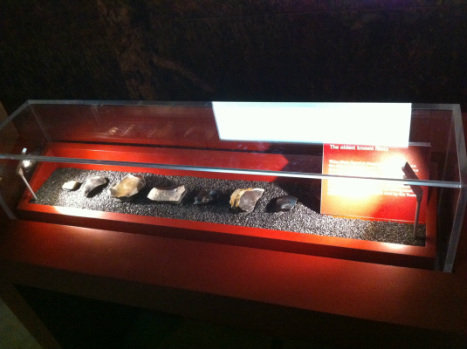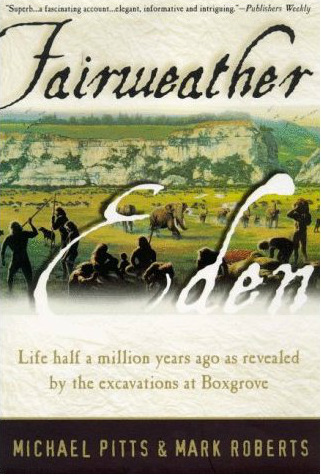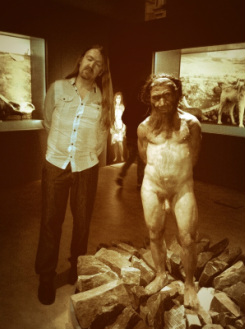|
I'm selling this suit of armour, all steel with a real war-worn look. I'm also selling the St George's Cross shield and helmet, perfect for any would-be dragon slayer. Please contact us for sizes, costs and delivery information. I'm selling my armour because it is time for me to hang up my spurs and move on. For many years my core activity was performing as a wide variety of costumed characters on TV and at live events. I acted in three series of Horrible Histories and portrayed many rogues including William the Conqueror. My work now is mostly about teaching history and advising TV productions and museums so I rarely get into character. Like a rolling stone, I've gathered much kit and caboodle from working on hundreds of productions. I'm now selling it to get some much-needed space and, I hope, so that a new generation of performers can use it.
1 Comment
Templeton's Carpet Factory in Glasgow is an industrial building yet was built in the very grandest style. Modeled on the Doge's Palace in Venice, it is a stunning example of industrial optimism. Thank you to @LoveArchaeology for sharing the great building with us. To learn more, please visit the website of @rcahms Further information is in the archives of @GUArchives http://archiveshub.ac.uk/data/gb0248-stod-201 If you have a favourite building, please write a guest blog so that everybody can learn from your enthusiasm. Ukraine and Crimea are deeply rutted by the wheels of war-wagons from countless wars. These ruts are once again being gouged ever deeper, blighting the lives of the long-suffering people. All four horsemen of the apocalypse have scarred Ukraine, especially the radioactive pestilence of Chernobyl. I have created these images so that we may never forget the suffering caused. A glamorous French chef called Alexis Soyer was an unlikely hero of the Crimean War. He heard the PBI were suffering from appalling conditions in the front line. Cold and dysentery were killing more men than shot and shell. Soyer designed a simple but brilliant stove that could use any fuel and cook any food. He also created recipes for cooking hearty food on a massive scale using his eponymous stove. Here's Soyer's recipe for a huge stew to feed 100 men: Food for 100 men, using two stoves
Cut or chop 50Lbs. of fresh beef in pieces of about 1/4Lb. each; put in the boiler, with 10 tablespoonfuls of salt, two tablespoonfuls of pepper, four tablespoonfuls of sugar, onions 7 Lbs. cut in slices: light the fire now, and then stir the meat with a spatula, let it stew from 20 to 30 minutes, or till it forms a thick gravy, then add a pound and a half of flour; mix well together, put in the boiler 18 quarts of water, stir well for a minute or two, regulate the stove to a moderate heat, and let simmer for about two hours. Mutton, pork, or veal can be stewed in a similar manner, but will take half an hour less cooking. Note. A pound of rice may be added with great advantage, ditto plain dumplings, ditto potatoes, as well as mixed vegetables. For a regiment of 1,000 men use 20 stoves. The Natural History Museum has created a very special exhibition called 'Britain: one million years of the human story' describing the long journey of humanity in the area that is now the UK. Our journey together starts with the earliest evidence of human habitation here, a collection of flint tools that are one million years old. The exhibition has brought together, for the very first time, all the important archaeological finds of early humans in Britain. These finds are both delicate and priceless, so the curators have ensured there are plenty of replica skulls and tools for visitors to handle, enabling us to meet our ancestors. The Butchers of Boxgrove are featured with human bones, their tools and butchered animal remains on display. Please do read the excellent book about this archaeological investigation that describes how these people socialised, lived and ate together. Our ancestors have been brought to life with uncanny accuracy with realistic life-sized models and photos on the walls. Standing face to face with our forbears is a very moving experience and brings home their similarities to us rather than their differences. They appear not as primitives or savages but as our family. A deep mirror of history in which we can see ourselves. Please visit this excellent exhibition at the Natural History Museum and do heed the wisdom of the curator, our journey together of #1millionyears has only just begun. History is a journey not a destination. Tickets for 'Britain: one million years of the human story' can be booked online by following this link.
Our thanks to Jonathan Tyzack for arranging our visit. The world is the King's chocolate cup #ChocolateKitchen - the story of C18th drinking chocolate at Hampton Court Palace Hampton Court Palace has restored and brought back to life the long-lost #ChocolateKitchen of the C18th King Georges. Chocolate was a new and glamorous product at the time, valued for medicinal qualities and as an expression of status. Devotion to this tasty treat was taken to dramatic excess at Hampton Court Palace where the Kings employed their own personal chocolatier to prepare their cup of drinking chocolate each morning. The chocolatier was not alone but had a small team of servants to do the hard-grind for him, literally. He was also provided with a #ChocolateKitchen suite, especially built below the King's quarters and his own accommodation too. Hampton Court Palace have restored the #ChocolateKitchen to how it looked when in use in the18th century. The complete surviving room has been protected by having images projected onto the walls to show the contents, instead of intrusive display boards. Next door, another room has been created as a facsimile of the original #ChocolateKitchen and 18th century chocolate preparation is demonstrated there by a talented historical interpreter. When he is not present, a film of him at work is projected onto the wall. Please visit this wonderful new but old display at Hampton Court Palace and after visiting #ChocolateKitchen, relax in the Fountain Court Café with a Chocolate Flight (priced at £3.95). You can taste and enjoy the same rich, spiced hot chocolate that the Georgian Kings savoured every morning. More information about #ChocolateKitchen can be found at the Hampton Court Palace website. But. ... please think about it too. Please think about how the hot chocolate travelled from plants grown around the world to the lips of a grandiose monarch. Cocoa and sugar cane are native to South and Central America. By the C18th they were being grown in Caribbean plantations that only functioned due to the inhumanity of slavery. So, the cocoa and sugar used in #ChocolateKitchen were the product of a people stolen from Africa, hauled across the Atlantic and then brutalised in Caribbean plantations. The spices added to the King's choc included vanilla from South America and nutmeg from the spice islands. These spices were the product of the fight for colonial expansion betwixt England, the Netherlands and Spain and relied on international trade and shipping. #ChocolateKitchen was well stocked with fine silver, pewter, copper, porcelain and glassware. All products of a burgeoning C18th industry. We had learned from China how to create porcelain and from the Roman Empire, and ultimately Jews and Arabs, how to create fine glassware. By the time the King George had tasted his morning chocolate he was already beholden to the whole world. Another King reminded us of this in 1963, not 1763. We are everlasting debtors to known and unknown men and women.... When we arise in the morning, we go into the bathroom where we reach for a sponge provided for us by a Pacific Islander. We reach for soap that is created for us by a Frenchman. The towel is provided by a Turk. Then at the table we drink coffee which is provided for us by a South American, or tea by a Chinese, or cocoa by a West African. Before we leave for our jobs, we are beholden to more than half the world. Our thanks to Polly Putnam, curator, Historic Royal Palaces and Marc Meltonville, food historian, Historic Royal Palaces, for an excellent tour of the #ChocolateKitchen.
To plan your day at Hampton Court Palace and book your tickets, please follow this link. Dr Seuss was born on 2 March 1904 as Theodor Seuss Geisel. He studied to be a Doctor, not of medicine but of Literature at Oxford. I adore the books written by Dr Seuss. I read them avidly as a child and now I read them with joyous gusto to the children of today. Dr Seuss is a great champion of literacy as he has made reading accessible and a joy for millions of children. Literacy is the great chain-breaker, freeing humanity from fear, poverty and dictatorship. Our hero, Malala, is a living testament to that. To celebrate the birthday of Dr Seuss and to cheer all champions of literacy, I have recorded 'Green Eggs and Ham' Happy birthday Dr Seuss, long may your books be enjoyed.
|
Archives
January 2017
Categories
All
|
Copyright for all images and text on this website is owned by Matthew Ward Hunter and Gill Fraser Lee, @HistoryNeedsYou unless stated otherwise. Images and content may not be used elsewhere without permission.

























 RSS Feed
RSS Feed